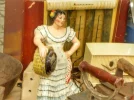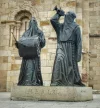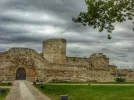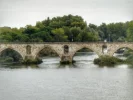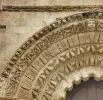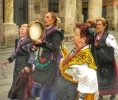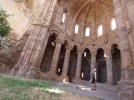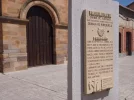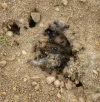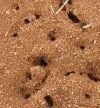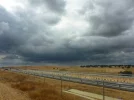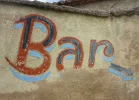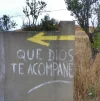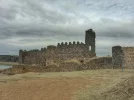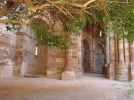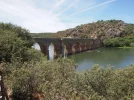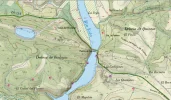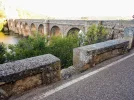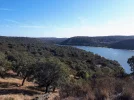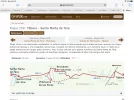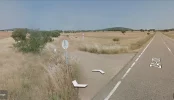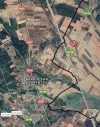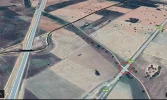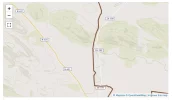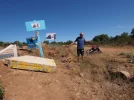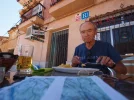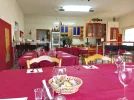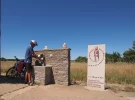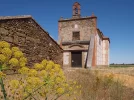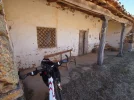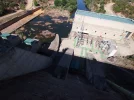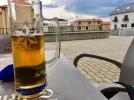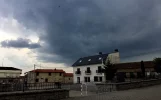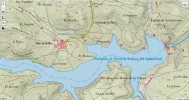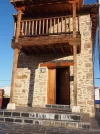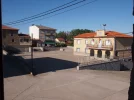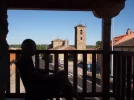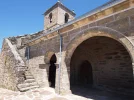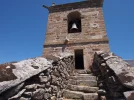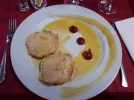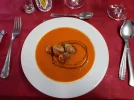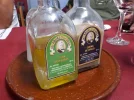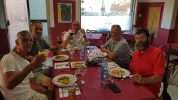Day 0 - Home to Zamora –
I'm arriving in Madrid tomorrow (Sunday) just before noon, after travelling 16 hours and 9 time zones. From the Madrid airport I might get the Metro to Atocha, simply because I like the Metro and I always feel that I've arrived in Madrid when I get to Atocha station. It is familiar - I first went there in 1971. However, I will need to get to Chamartin Station for a train to Zamora. One leaves at 14:57, getting to Zamora only about 90 minutes later. The next one takes 3 hours, so if I miss the first one, I'll wait for the fast one leaving at 16:30.
In Zamora, I'll want a good night's sleep . I stayed in the albergue before, but will want a private room for the night.
Questions:
- What is there to do around Chamartin Station for a couple of hours on Sunday? Should I go straight there from the airport, or should I pass through Atocha and plan to get the later train?
- Where should I stay in Zamora? I want a comfortable private room since my sleep will be disturbed and I don't plan to leave early the next day.
- What are the sightseeing highlights for a few hours in Zamora?
- Should I walk or bus to Montamarta?
Ok, as one who always jumps into these threads when they are real, and as someone looking for distractions, I’ll take a stab. Not sure how this will go, but I am always happy to give advice — even when it is “fake advice.”
At first, I thought — why would you go to Atocha if your train is leaving from Chamartín? It’s a 40 minute metro ride, with changes. Then back from Atocha to Chamartín, another half hour or so. BUT... if you really want to get back to Atocha and if you have the time, who am I to stand in the way. Sounds like it may have some symbolic importance. The much easier route (and with much lower risk of pickpockets, in fact with virtually no risk of pickpockets) would be to take Cercanías from the “basement“of T4 at the airport. It runs twice an hour, so not as frequent as the metro, but gets you to chamartín in about 12 minutes. And it’s about a half hour from airport to Atocha. So if I were going to do that, I’d go by Cercanías in either case.
Now to your questions
1. Nothing much to do around Chamartín. It is soon to become the biggest
redevelopment project in the history of Madrid, which means that you may be seeing lots of demolition and cordoned off areas, but not much in the way of interesting sights. You could take a walk up the Castellana to the Plaza de Castilla where you will see the first arrow of the Camino de Madrid, which I believe is still outside the Rodillas sandwich shop.
2. I have stayed only in one place in Zamora other than the albergue. Once when I walked in totally zonked, I got a last minute cheap rate at the parador and enjoyed the bathtub, towels, and sheets more than most of the other amenities, which include seeing knights in full armor standing on the landings (no humans inside of course) and very heavy traditional Castilian furnishings. There is a nice outdoor terrace where you are likely to meet peregrinos from the nearby albergue and then decide how to react if they seem critical of your decision to splurge. You can use your favorite retort to the “you are not a true pilgrim” vitriol.
3. Sightseeing highlights. For me, the church
Santiago de los Caballeros is the absolutely most unmissable of Zamora’s 26 romanesque churches. It is slightly outside the gates (take an exit through the walls near the cathedral) and is where El Cid reportedly spent a night in prayer. Whether that is true or not, it is wonderful. If I only had a few hours, I probably would not go inside the cathedral (others may disagree, the museum has some pretty awesome tapestries), but it is unique in its architecture and interesting to see from the outside. The castle has been totally renovated and made welcoming to tourists, a huge change since my first time in Zamora years ago. Great tapas bars on the street that the parador is on. And the church of
San Cipriano, located between the albergue and the parador, has a very beautiful carving (in my aesthetic anyway) of Daniel in the lions’ den. That church, like many in Zamora, has stones that are purple-ish in color — I once heard an explanation of what the rock was, but I have forgotten.
4. That is a question only you can answer, but it isn’t a painful walk, maybe a bit boring but a good way to get into camino introspection mindset in my opinion. It’s also a good “first day distance” if you are trying to gear up slowly. The Bar Restaurante Rosamary on the way out of town is great. I know it’s always risky to walk by open cafés with the thought that you’ll find another one, but this one is worth it. Run by two women, at least it was, and the food was local and fresh.
So, now you have given me a great distraction from reading coronavirus threads!





